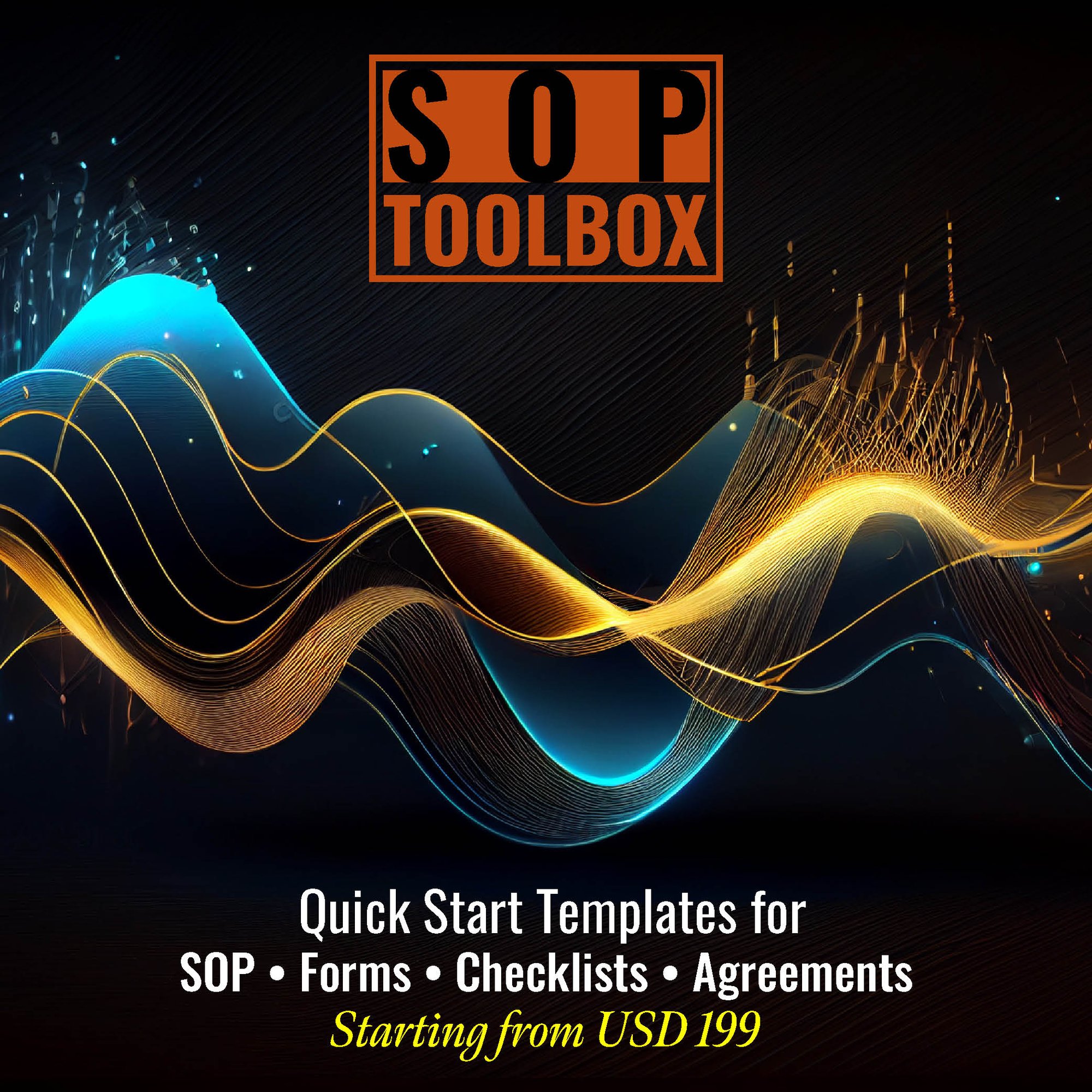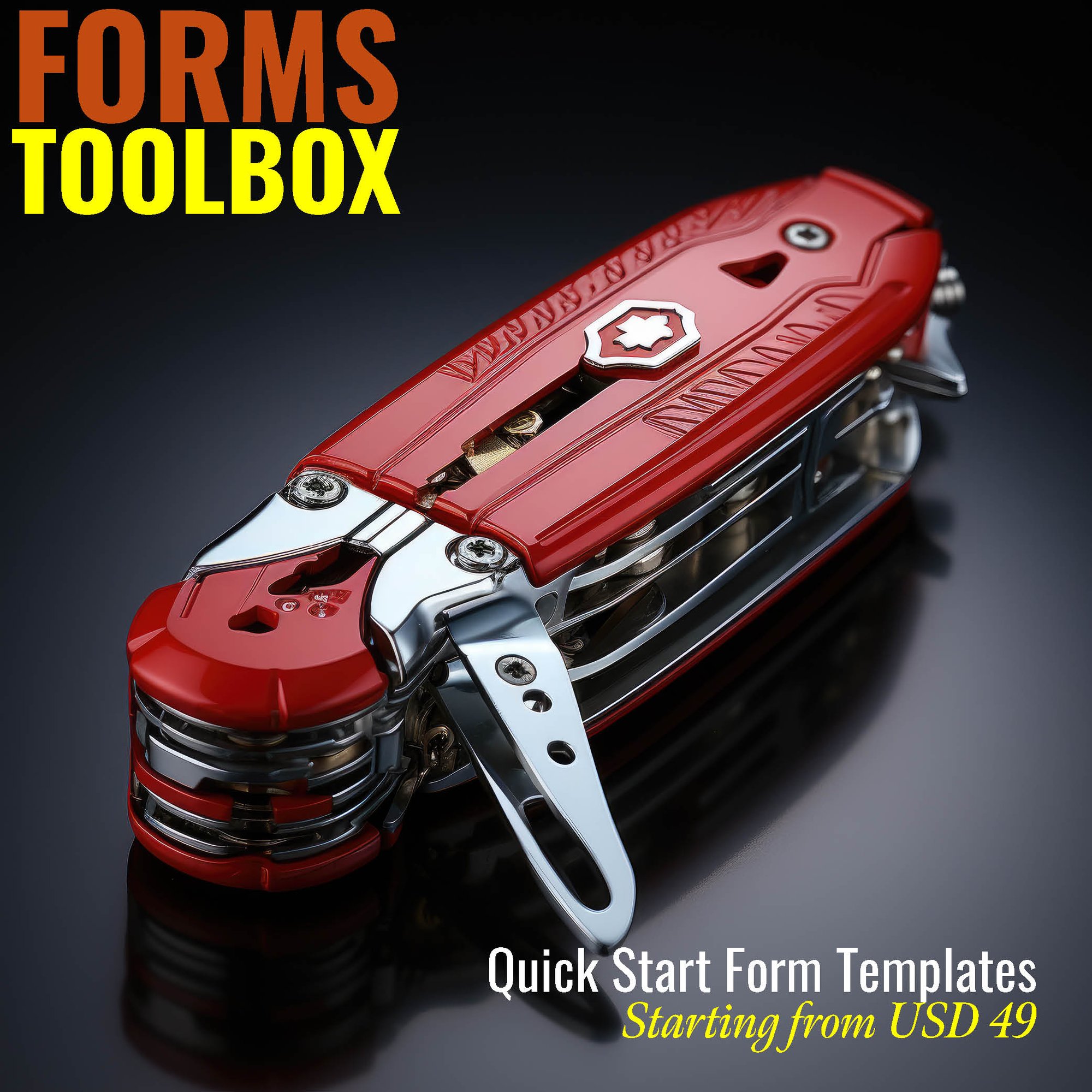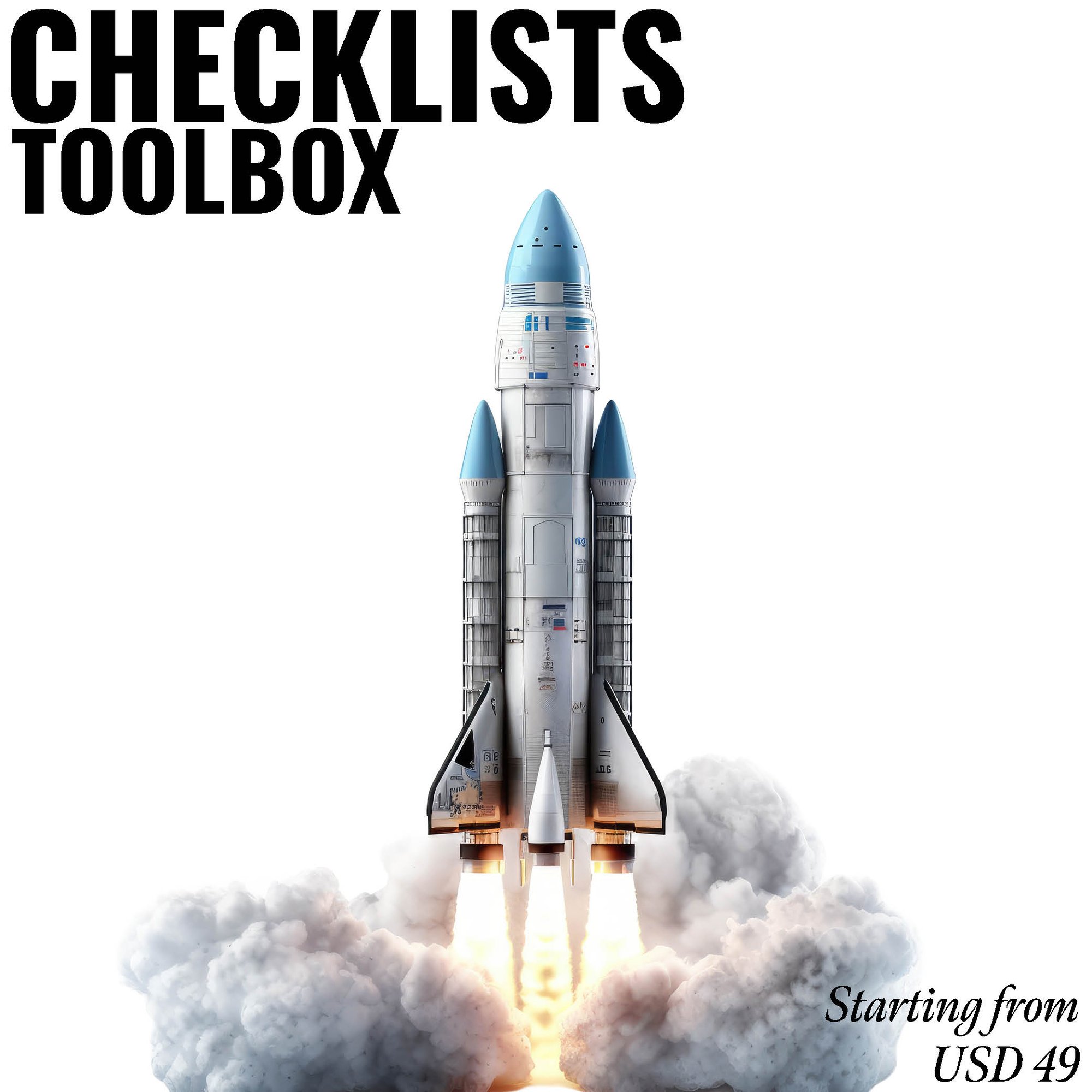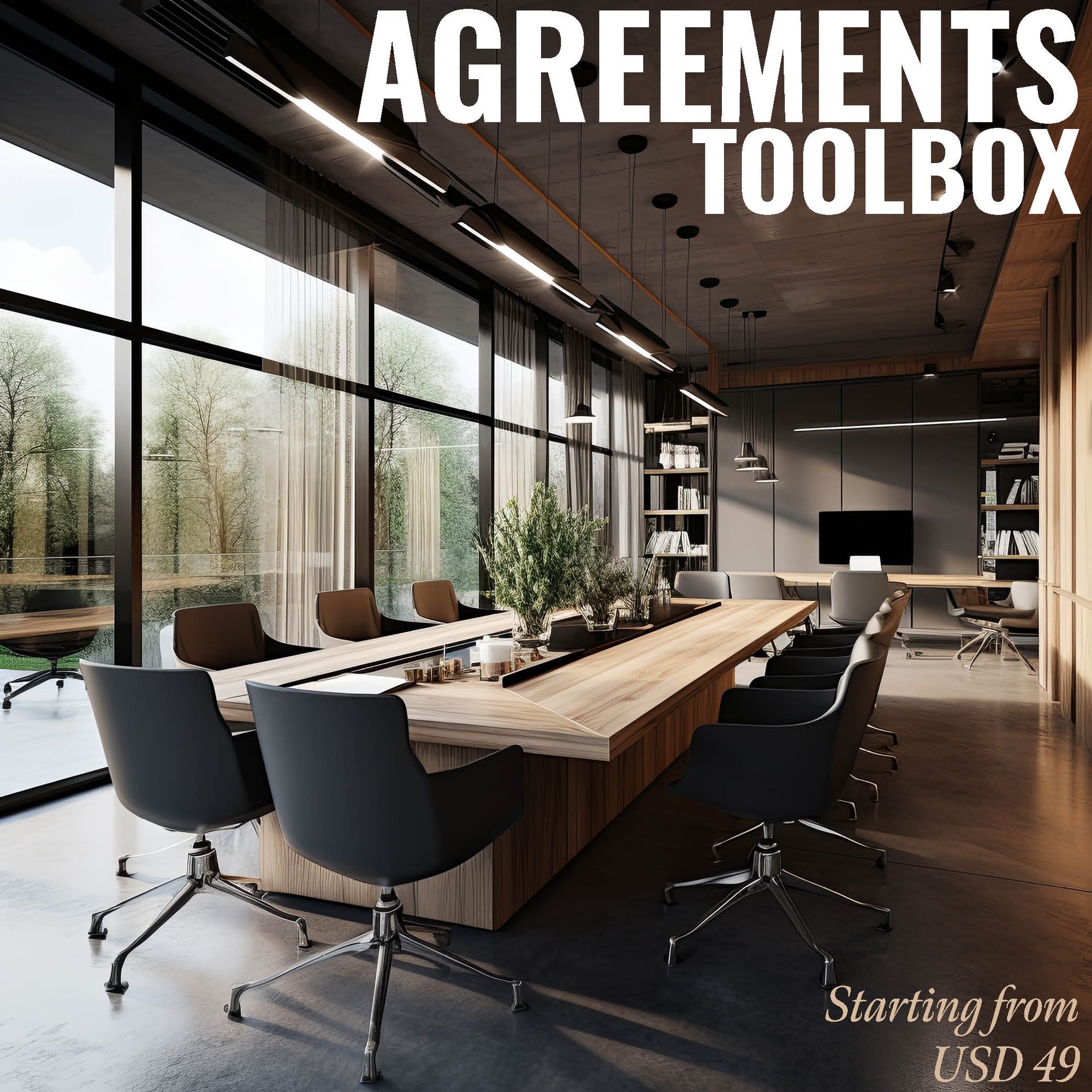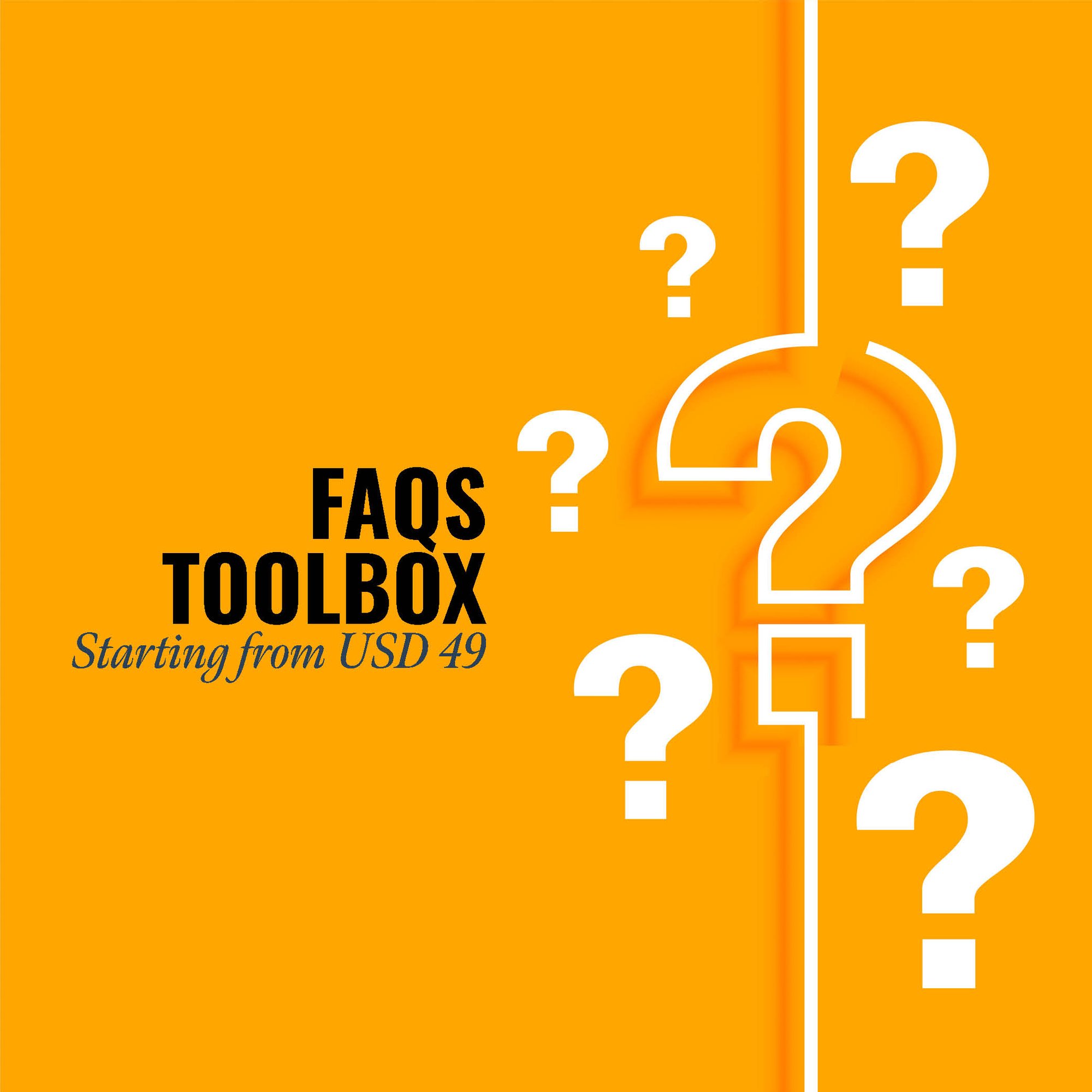An "SOP Manual for Meat and Meat Product Merchant Wholesalers" is of paramount importance for several reasons:
-
Food Safety: The manual outlines rigorous procedures for handling, storing, and distributing meat products, ensuring that they meet stringent food safety standards. This is critical for protecting public health and preventing foodborne illnesses.
-
Regulatory Compliance: Wholesalers in the meat industry are subject to extensive regulations. The manual helps ensure compliance with these regulations, reducing the risk of legal issues, fines, and reputation damage.
-
Quality Control: It sets forth best practices for preserving the quality of meat products during storage and distribution, maintaining their freshness and taste.
-
Operational Efficiency: SOPs streamline daily operations, improving resource utilization and reducing waste, leading to cost savings and higher profitability.
-
Risk Mitigation: By defining clear procedures, the manual helps mitigate risks associated with product spoilage, contamination, or mishandling.
-
Training and Onboarding: New employees can quickly adapt to the industry's specific requirements, reducing the learning curve and the potential for operational errors.
-
Traceability: SOPs facilitate the tracking of products, making it easier to identify and recall potentially contaminated or unsafe items.
-
Customer Satisfaction: Ensuring the quality and safety of meat products through SOPs enhances customer trust and satisfaction.
-
Brand Reputation: Consistency in quality and safety measures bolsters the reputation of meat wholesalers, which is vital for attracting and retaining customers.
In conclusion, an "SOP Manual for Meat and Meat Product Merchant Wholesalers" is indispensable for ensuring food safety, regulatory compliance, quality control, efficiency, risk mitigation, training, traceability, customer satisfaction, and brand reputation. It plays a vital role in the success and integrity of businesses in this industry.
CLICK HERE to download the List of SOPs Document in PDF format. Please share this document with your clients, colleagues and senior officers.
Top 50 SOPs for Standard Operating Procedures (SOPs) for Meat and Meat Product Merchant Wholesalers
SOP-753-001: Standard Operating Procedure for Receiving Raw Meat Products
SOP-753-002: Standard Operating Procedure for Storage of Raw Meat Inventory
SOP-753-003: Standard Operating Procedure for Meat Inspection
SOP-753-004: Standard Operating Procedure for Temperature Control in Storage
SOP-753-005: Standard Operating Procedure for Cross-Contamination Prevention
SOP-753-006: Standard Operating Procedure for Packaging Raw Meat Products
SOP-753-007: Standard Operating Procedure for Order Processing
SOP-753-008: Standard Operating Procedure for Product Labeling
SOP-753-009: Standard Operating Procedure for Quality Control Checks
SOP-753-010: Standard Operating Procedure for Traceability and Lot Identification
SOP-753-011: Standard Operating Procedure for Handling Recalled Products
SOP-753-012: Standard Operating Procedure for Inventory Management
SOP-753-013: Standard Operating Procedure for Equipment Sanitization
SOP-753-014: Standard Operating Procedure for Pest Control
SOP-753-015: Standard Operating Procedure for Employee Hygiene and Health
SOP-753-016: Standard Operating Procedure for Employee Training
SOP-753-017: Standard Operating Procedure for Facility Security
SOP-753-018: Standard Operating Procedure for Emergency Response
SOP-753-019: Standard Operating Procedure for Disposal of Waste
SOP-753-020: Standard Operating Procedure for Transportation of Meat Products
SOP-753-021: Standard Operating Procedure for Customer Complaint Handling
SOP-753-022: Standard Operating Procedure for Product Rotation
SOP-753-023: Standard Operating Procedure for Cleaning and Sanitization of Processing Equipment
SOP-753-024: Standard Operating Procedure for Record Keeping
SOP-753-025: Standard Operating Procedure for Allergen Control
SOP-753-026: Standard Operating Procedure for Handling and Shipping Frozen Products
SOP-753-027: Standard Operating Procedure for Thawing Frozen Meat Products
SOP-753-028: Standard Operating Procedure for Product Sampling
SOP-753-029: Standard Operating Procedure for Supplier Approval and Evaluation
SOP-753-030: Standard Operating Procedure for HACCP (Hazard Analysis and Critical Control Points)
SOP-753-031: Standard Operating Procedure for Product Traceability
SOP-753-032: Standard Operating Procedure for Temperature Monitoring during Transportation
SOP-753-033: Standard Operating Procedure for Cross-Docking Operations
SOP-753-034: Standard Operating Procedure for Storage of Finished Products
SOP-753-035: Standard Operating Procedure for Order Fulfillment Accuracy
SOP-753-036: Standard Operating Procedure for Product Recall Communication
SOP-753-037: Standard Operating Procedure for Handling Expiry and Shelf-Life Management
SOP-753-038: Standard Operating Procedure for Equipment Calibration
SOP-753-039: Standard Operating Procedure for Sanitary Design of Facilities
SOP-753-040: Standard Operating Procedure for Raw Material Receiving Inspection
SOP-753-041: Standard Operating Procedure for Product Weight Verification
SOP-753-042: Standard Operating Procedure for Traceability of Subcomponents
SOP-753-043: Standard Operating Procedure for Allergen Labeling
SOP-753-044: Standard Operating Procedure for Handling Customer Returns
SOP-753-045: Standard Operating Procedure for Supplier Audits
SOP-753-046: Standard Operating Procedure for Ingredient Specification Review
SOP-753-047: Standard Operating Procedure for Food Defense and Security
SOP-753-048: Standard Operating Procedure for Shelf-Life Testing
SOP-753-049: Standard Operating Procedure for Product Sampling for Quality Control
SOP-753-050: Standard Operating Procedure for New Product Introduction
-
Cutting of purchased carcasses (except boxed meat cut on an assembly line basis) merchant wholesalers
-
Deli meats merchant wholesalers
-
Fresh meats merchant wholesalers
-
Frozen meats (except packaged) merchant wholesalers
-
Lard merchant wholesalers
-
Meats and meat products (except canned, packaged frozen) merchant wholesalers
-
Meats, cured or smoked, merchant wholesalers
-
Meats, fresh, merchant wholesalers
-
Meats, frozen (except packaged), merchant wholesalers
-
Processed meats (e.g., luncheon, sausage) merchant wholesalers
1. Standard Operating Procedures (SOP) Manual for Accounts Department
2.Standard Operating Procedures (SOP) Manual for Finance Department
3. Standard Operating Procedures (SOP) Manual for Customer Service
4. Standard Operating Procedures (SOP) Manual for CRM Department
5. Standard Operating Procedures (SOP) Manual for Credit Department
6.Standard Operating Procedures (SOP)Manual for Treasury Department
7.Standard Operating Procedures (SOP) Manual for Human Resources (HR) Department
8. Standard Operating Procedures (SOP) Manual for Training Department
9. Standard Operating Procedures (SOP) Manual for Learning & Development Department
10. Standard Operating Procedures (SOP) Manual for Administration Department
11. Standard Operating Procedures (SOP) Manual for Front Office
12. Standard Operating Procedures (SOP) Manual for House Keeping
13. Standard Operating Procedures (SOP) Manual for Safety Department
14. Standard Operating Procedures (SOP) Manual for Security Department
15. Standard Operating Procedures (SOP) Manual for Facilities Management Department
16. Standard Operating Procedures (SOP) Manual for Vigilance Department
17. Standard Operating Procedures (SOP) Manual for Legal Department
18. Standard Operating Procedures (SOP) Manual for Information Technology (IT) Department
19. Standard Operating Procedures (SOP) Manual for Sales & Marketing Department
20. Standard Operating Procedures (SOP) Manual for Design & Engineering
21.Standard Operating Procedures (SOP) Manual for Procurement Department
22. Standard Operating Procedures (SOP) Manual for Production
23. Standard Operating Procedures (SOP) Manual for SRM Department
24.Standard Operating Procedures (SOP) Manual for Supply Chain Department
25. Standard Operating Procedures (SOP) Manual for Warehouse
26. Standard Operating Procedures (SOP) Manual for New Product Development Department
27. Standard Operating Procedures (SOP) Manual for Research and Development
28. Standard Operating Procedures (SOP) Manual for Quality Department
29. Standard Operating Procedures (SOP) Manual for Calibration Department
30. Standard Operating Procedures (SOP) Manual for Maintenance Department
SOP ToolBox: If you are reading these lines, I am sure you are looking for Standard Operating Procedure guidelines or SOPs itself. In both the cases, searching in internet will not be yielding any great help. Because no company shares their SOP Development Process and certainly don’t share their SOP Documents. The best way to develop an SOP is creating one for yourself. At Fhyzics, we write SOPs day-in and day-out for companies across the globe including some of the Fortune 500 organisations. Our charge ranges from USD 5000 to USD 50000 depending upon the number of processes to be covered. Certainly, this is not affordable to small and mid-size organisations. Hence, we decided to create this SOP ToolBox to disseminate our 8-Step SOP Development Life-Cycle and best practices at an unbelievably low price.
I always say, writing an SOP is somewhere between art and science. So far you may be clueless on where to start and how to progress on an SOP? This will not be the case after you diligently go through this SOP ToolBox. We have summarised all our secrets here to get you started and to deliver a stunning SOP to your management.
Though there is variation in the strategies, structures, and activities of the food cluster Organizations described above, there are important commonalities that may inform organizing Activities by Chicago land’s food cluster.
- FCOs have identified consistent food industry challenges, trends and opportunities:
Although FCOs differ on the extent to which industry trends drive their strategies and Services, there is substantial consistency in FCOs’ strategic plans and market analyses about what these challenges and opportunities are. These trends largely mirror the Industry Trends and Challenges section of this report, and have been identified and analysed by food trade associations and industry research firms. Common themes include changing consumer tastes (e.g., healthy foods, convenient products), emerging technology opportunities, food safety regulations and talent development.
2) FCOs include firms across the value chain but primarily focus on manufacturing firms: While firms and organizations throughout the food and beverage supply chain are frequently engaged in the discussion and design of strategies, programs and services, FCOs do not tend to target distribution, business services and equipment manufacturing firms in their outreach when developing their membership. Rather, FCOs help food processors identify and connect with these firms and services, and in some cases FCOs facilitate collaborations or membership-related discounts with non-processing companies.
3) FCOs often advertise, coordinate and consolidate existing programs and resources rather than create new ones: Providing the infrastructure to link firms to existing programs, versus developing and providing new services, is a crucial FCO activity, along with coordinating, aligning and enhancing those services to strategically develop the cluster. Several FCO executives commented on the importance of demonstrating to stakeholders and partners that the FCO does not intend to compete with existing service providers, but rather helps connect and scale activity, building an industry ecosystem which is “a whole greater than the sum of its parts.” One FCO executive described his organization as a “resource cluster,” and believed that this framing was an effective organizing strategy. When FCOs create new products and services, they often do so through supporting the expansion of existing providers, or as the result of generating new demand and then addressing emerging needs through new collaborations.
4) FCOs tend to not organize their activities and programs by sub-clusters: Most FCOs (excepting Scotland Food & Drink, which has adopted a focus on provenance and premium products) organize their strategies around broad industry trends and issues, delivering programs and services that are relevant across many types of firms. During outreach interviews, FCO staff suggested that it is easier to promote collaboration among firms when competitors are not concentrated within committees or programs. Organizing services by issues and opportunities with broad-based appeal may help food Firms to maintain a perspective on the industry-wide benefits of the FCO’s offerings.
5) FCO’s engage the entire spectrum of firm stage and size, and tailor activities and Strategies to varying firm needs: FCOs target early-stage and small firms for certain services such as business planning assistance and one-on-one consultations, but firms of all stages and sizes utilize cluster services related to product development, process improvement training, networking, workforce training and seminars and workshops. While smaller and younger firms are more likely to be attracted to the benefits provided by a FCO’s suite of services, some of the FCOs’ offerings will provide value to firms regardless of their stage of development.
6) FCOs have, or are moving towards, placed-based incubation facilities: Most FCOs have already constructed or are planning to build innovation centres. In addition to providing placed-based incubator services to start-ups and early stage firms, these centres create opportunities for collaborative R&D and can catalyse the commercialization of food related research. Given the trend towards outsourcing R&D, such facilities can provide value to large firms as well as SMEs.
7) Workforce development issues are a common focus, with varying strategies and intensity of service: While FCOs vary in which opportunities and issues they prioritize, one topic they consistently address is the need for workforce development. Some FCOs currently focus on strengthening traditional, existing workforce development programs whereas others address the issue throughout the educational pipeline, including secondary education, career recruitment and talent management strategies. FCOs are also cognizant of emerging issues, such as technology adoption and food safety regulations that are heightening the importance of incumbent worker training programs tailored to food firms’ needs.
FCO Initial Institutional Sponsors/Hosts
Cluster organizations aim to grow and develop private industries, which guides them towards institutional structures that maximize firm participation, not just as members but as directors of the organizations’ mission, vision, strategies, services and products. At their outset, though, cluster organizations originate in various ways and with different host entities playing lead roles in guiding their initial organizational structures. A chamber of commerce, trade association or university may serve as the starting point for an FCO, providing institutional support as the FCO clarifies its goals and pilots products and services.
Options for initial sponsor/host organizations, and their advantages and drawbacks, include:
1) University: Most FCOs have relationships with regional universities, and many are launched within universities, with pros and cons. Advantages include greater access to experts in food and manufacturing technology and innovation, who may also serve as trainers to member firms; utilization of existing staff and potential cost sharing of administrative functions; access to university databases to identify potential cluster participants; and a commitment to research-driven strategies. Disadvantages include competing with university mandates and priorities; potential for over-emphasis on firm based interventions and technology dissemination rather than industry-wide Programming; a culture and set of institutional imperatives less compatible with Business and industry operations; and less understanding of business and marketing needs, external relations, consensus building and industry collaboration.
2) Chamber of Commerce/Trade Association: An active, regional trade association or chamber of commerce has the benefits of existing committee structures, actively engaged industry leadership and a history of developing programming around industry trends and priorities. Drawbacks include a historically external orientation (i.e., focused on external advocacy and regulatory matters rather than building internal cluster collaboration and competitiveness) and a limited membership base.
3) Economic Development Agencies: The FCOs that are the product of economic development agencies are often preceded by, and connected with, well-developed regional food strategies that extend beyond the FCOs’ purview, into areas such as agriculture or retail. Disadvantages of this option include the possibility of diminishing the cluster’s credibility with the industry, being subject to the changing priorities of political administrations, and the limited resources of government agencies.
Regardless of the host, FCOs must consider various corporate structures (e.g., 501(c)(3), (5) or (6)), with the choice driven by firms’ priorities identified in the planning process, as different Activities lend themselves to distinct forms of incorporation.
-
Kunzler and Co Inc. in Pennsylvania, United States |
-
Fresh Mark in Ohio, United States |
-
Birchwood Foods in Wisconsin, United States |
-
Oklahoma National Stockyards in Oklahoma City, United States |
-
Superior Farms in California, United States |
-
Marx Companies Inc. in Atlantic Highland, United States |
-
Sara Lee Foods in Arkansas, United States |
-
Oberto Sausage Co in Washington, United States|
Research By : Eshwaran Murugappan
Please click here to review the SOP Templates’ Terms & Conditions.
Keywords: sop, manual, policy, sop meaning, sop full form, standard operating procedure, full sop, user manual, sop is, user guide, instruction manual, owners manual, sample sop, operators manual, sop example,standard operating procedure examples, abbreviation sop, standard operating procedure sample, milk sop, sop document, sop process,m manual, operating procedures, operating process, sop meaning in hindi, standard procedure, sop standard operating procedure, sop top, sop writing, standard operating procedures manual, sop meaning in english, sample sop for mba, standard operating procedures examples in office, product manual, sample sop for ms, maintenance manual, sop security, sop in research, sop in business, whats sop, standard of operation, sop set, sop procedure, sop marketing,sop training, sop hotel, sop, sop meaning business, sop form, sba sop,sop software, help manual, sop it, army sop, company sop, sop sap, o m manual, standard operating procedure examples for small business, shop manual, sop manual, sop meaning in business, purpose of standard operating procedures, sop full meaning, standard operating procedure meaning, sop military, sop standard, sop meaning medical, hr sop, sop production, purpose of sop, sop management, warehouse sop, sales sop, sop pharma, sop manufacturing, sop creation, sop laboratory, ms sop, sop full form in hindi, sop front office, sop customer service, sop online, gmp sop, sop purchasing, sop pharmacy, sop safety, sop for project management,sample sop for australian student visa, sop meaning in tamil, sop system, best sop, sop up, sop in english, sop for mechanical engineering, sop for university,sop in malay, sop lab, sop for business analytics, sop model, sop in pharmacy, developing sops, standard operating procedure examples manufacturing, sop full form in retail,sop full form in medical, sop engineering, sop application, writing standard operating procedures, procurement sop, sop maintenance,standard operating procedure nhs, sop clinical trial, sop operations,sop in construction, operating procedures manual, standard operating procedure ppt, standard procedure meaning, sop ppt, a sop, sop document meaning, sop def, sop full form in safety, sop quality control, sop for college, sop quality, sop service, types of sop, sop for engineering management, sop document sample, benefit of sop, preparing sop, standard operating procedure in hindi, sop for visa, sop compliance, sop protocol, sop aviation, sop meaning in chat, standard operating process, sop meaning military, sop for business management, standard operating procedure software, sop list, sop medical, sop logistics, sop project, sop for it department, sop call center, standard work procedures, sba sop 50 10, sop meaning in logistics, standard operating procedure laboratory, test sop, sop sample for ms, drafting sop, sops meaning in tamil, sops meaning in telugu, sop automotive, standard operating system, sop cafe, sop slideshare, sop ap, sop bank, sop in retail, creating standard operating procedures, sop admin, document control sop, pharmaceutical sop,sop in pharmaceutical industry, statement of purpose harvard, sop examples for ms, quality assurance sop, sop in clinical research, nursing sop, sop for transportation, sop policies, sops are specific to a process, sop in hindi, standard operating procedure for warehouse picking, master sop, list of sop for pharma, pharmaceutical sop examples, types of standard operating procedures, retail sop, sample sop for ms in mechanical engineering, standard operating protocol,sop supply chain, system operating procedure, sop rules, example of sop in research, sop in food industry, sop for international business management, sop for hospitality management, sop for hr department, army sop example, sop standard operating, office sop, hr standard operating procedures, preventive maintenance sop, sop for purchase department, human resources sop, fire department sops, information technology sop, operating procedure example, administration sop,sop for retail store, indian sop, construction management sop, sop hotel front office, example sop document, standard and procedures,working sop, sop for maintenance department, sop hrd department,sop full form in hotel industry, sop full, sop for human resource management, laboratory sop examples, standard operating procedure for quality control, sop for ms in mechanical engineering, sop meaning army, security standard operating procedures, sop machine, sample sop for internship, sop for hotel management, sample sop for masters, qa sop, developing standard operating procedures, standard operating procedure document, product recall sop, marketing statement of purpose, it standard operating procedures, equipment sop, sop purpose example, sop shipping, sop for sales and marketing,converting pos to sop, workshop sop, standard operating procedure manufacturing, digital marketing standard operating procedures, following standard operating procedures, sop ki full form, sop for nursing procedures, an sop, purchase sop for manufacturing company, sop a, statement of purpose for mba marketing, full meaning of sop, sop for research internship, research sop sample,vendor qualification sop, sop purchasing and receiving, sop meaning in visa, sop for admission, standard operating procedure medical office, sop in industry, sop sales marketing, navy sop, project management standard operating procedures, sop it support, standard operating manual, security operating procedures, statement of purpose for international business, procurement standard operating procedures, communication sop, sop full form in pharma, minimum sop, sop health and safety, product sop, sop for marketing department, sop in medical terms, sales standard operating procedure, sop purchase order, department sop, customer service standard operating procedures, clinical sop, marketing standard operating procedure, sop standard operating procedure example, construction standard operating procedures, standard of operations procedures manual sample, sop for facility management, sop full form in education, standard operating procedure in food industry, visa sop,sop for business administration, company sop meaning, sop work, sop operating procedure, sop for summer internship in engineering sample, general administration sop, sop for administrative duties.
Our SOP Templates’ clients are from the following States and Countries:
Alabama, Alaska, Arizona, Arkansas, California, Colorado, Connecticut, Delaware, Florida, Georgia, Hawaii, Idaho, Illinois, Indiana, Iowa, Kansas, Kentucky, Louisiana, Maine, Maryland, Massachusetts, Michigan, Minnesota, Mississippi, Missouri, Montana, Nebraska, Nevada, New Hampshire, New Jersey, New Mexico, New York, North Carolina, North Dakota, Ohio, Oklahoma, Oregon, Pennsylvania, Rhode Island, South Carolina, South Dakota, Tennessee, Texas, Utah, Vermont, Virginia, Washington, West Virginia, Wisconsin, Wyoming.
Afghanistan, Albania, Algeria, Andorra, Angola, Antigua and Barbuda, Argentina, Armenia, Australia, Austria, Azerbaijan, Bahamas, Bahrain, Bangladesh, Barbados, Belarus, Belgium, Belize, Benin, Bhutan, Bolivia, Bosnia and Herzegovina, Botswana, Brazil, Brunei Darussalam, Bulgaria, Burkina Faso, Burundi, Cabo Verde, Cambodia, Cameroon, Canada, Central African Republic, Chad, Chile, China, Colombia, Comoros, Congo (Republic of the), Costa Rica, Croatia, Cuba, Cyprus, Czech Republic (Czechia), Democratic People’s Republic of Korea (North Korea), Democratic Republic of the Congo, Denmark, Djibouti, Dominica, Dominican Republic, Ecuador, Egypt, El Salvador, Equatorial Guinea, Eritrea, Estonia, Eswatini, Ethiopia, Fiji, Finland, France, Gabon, Gambia, Georgia, Germany, Ghana, Greece, Grenada, Guatemala, Guinea, Guinea-Bissau, Guyana, Haiti, Honduras, Hungary, Iceland, India, Indonesia, Iran, Iraq, Ireland, Israel, Italy, Jamaica, Japan, Jordan, Kazakhstan,Kenya, Kiribati, Kuwait, Kyrgyzstan, Lao People’s Democratic Republic (Laos), Latvia, Lebanon, Lesotho, Liberia, Libya, Liechtenstein, Lithuania, Luxembourg, Madagascar, Malawi, Malaysia, Maldives, Mali, Malta, Marshall Islands, Mauritania, Mauritius, Mexico, Micronesia (Federated States of), Moldova, Monaco, Mongolia, Montenegro, Morocco, Mozambique, Myanmar (Burma), Namibia, Nauru, Nepal, Netherlands, New Zealand, Nicaragua, Niger, Nigeria, North Macedonia (formerly Macedonia), Norway, Oman, Pakistan, Palau, Panama, Papua New Guinea, Paraguay, Peru, Philippines, Poland, Portugal, Qatar, Republic of Korea (South Korea), Republic of the Congo, Romania, Russian Federation (Russia), Rwanda, Saint Kitts and Nevis, Saint Lucia, Saint Vincent and the Grenadines, Samoa, San Marino, Sao Tome and Principe, Saudi Arabia, Senegal, Serbia, Seychelles, Sierra Leone, Singapore, Slovakia, Slovenia, Solomon Islands, Somalia, South Africa, South Sudan, Spain, Sri Lanka, Sudan, Suriname, Sweden, Switzerland, Syrian Arab Republic (Syria), Tajikistan, Thailand, Timor-Leste, Togo, Tonga, Trinidad and Tobago, Tunisia, Turkey, Turkmenistan, Tuvalu, Uganda, Ukraine, United Arab Emirates, United Kingdom of Great Britain and Northern Ireland, United Republic of Tanzania, United States of America, Uruguay, Uzbekistan, Vanuatu, Venezuela, Viet Nam, Yemen, Zambia, Zimbabwe.
Fhyzics supports organisations in developing the following documentations:
Standard Operating Procedures (SOPs), Work Instructions, Policies and Procedures, Process Flow Diagrams, Job Descriptions, Training Manuals, Employee Handbooks, Compliance Guidelines, Quality Assurance Manuals, Health and Safety Procedures, Risk Management Plans, Business Continuity Plans, Internal Audit Procedures, Incident Reporting Forms, Performance Management Guidelines, Change Management Procedures, Vendor Management Guidelines, Customer Service Protocols, IT Security Policies, IT Support Documentation, Disaster Recovery Plans, Operational Checklists, Data Management Policies, Confidentiality Agreements, Non-Disclosure Agreements, Employee Onboarding Procedures, Employee Exit Procedures, Performance Appraisal Forms, Employee Code of Conduct, Conflict Resolution Procedures, Product Development SOPs, Supply Chain Management Guidelines, Procurement Guidelines, Inventory Management SOPs, Shipping and Receiving Procedures, Production Scheduling SOPs, Maintenance Procedures, Equipment Calibration Documents, Environmental Compliance Documentation, Sustainability Policies, Customer Feedback Forms, Marketing Strategies, Advertising Guidelines, Brand Management Guidelines, Product Packaging SOPs, Laboratory Testing Procedures, Regulatory Compliance Documentation, Tax and Accounting Procedures, Contract Management Procedures, Legal Compliance Guidelines, Financial Reporting Procedures, Budgeting Procedures, Internal Control Procedures, Fraud Prevention Policies, Asset Management Guidelines, Purchase Order Procedures, Sales and Distribution Guidelines, Client Contracts, Customer Return Policies, Internal Communication Protocols, Vendor Evaluation Forms, Product Safety Standards, Workplace Health and Safety Standards, Public Relations Procedures, Social Media Management Guidelines, Crisis Management Plans, Employee Grievance Procedures, Privacy and Data Protection Policies, Digital Transformation Guidelines, Innovation Management Procedures, Continuous Improvement Guidelines, Strategic Planning Documents, Corporate Social Responsibility (CSR) Guidelines, Audit Trails and Records, Employee Training and Development Records, Succession Planning Documents, Talent Acquisition Procedures, Team Collaboration Protocols, Employee Benefit Plans, Workplace Diversity Guidelines, Time and Attendance Tracking, Payroll Procedures, Employee Leave Policies, Conflict of Interest Policy, Emergency Response Procedures, Environmental Impact Assessment Procedures, Transportation and Logistics Procedures, Inventory Control Forms, Warehouse Management Guidelines, Product Lifecycle Management SOPs, Customer Satisfaction Surveys, Third-Party Risk Assessment Guidelines, Technology Adoption Policies, Software Licensing Guidelines, Security Incident Response Procedures, Supply Chain Risk Management Policies, Product Recall Procedures, Food Safety Guidelines, Employee Wellness Programs, Workplace Ergonomics Guidelines.






.jpg?width=645&height=337&name=Standard%20Operating%20Procedure%20-%20SOP%20ToolBox%20(1).jpg)


